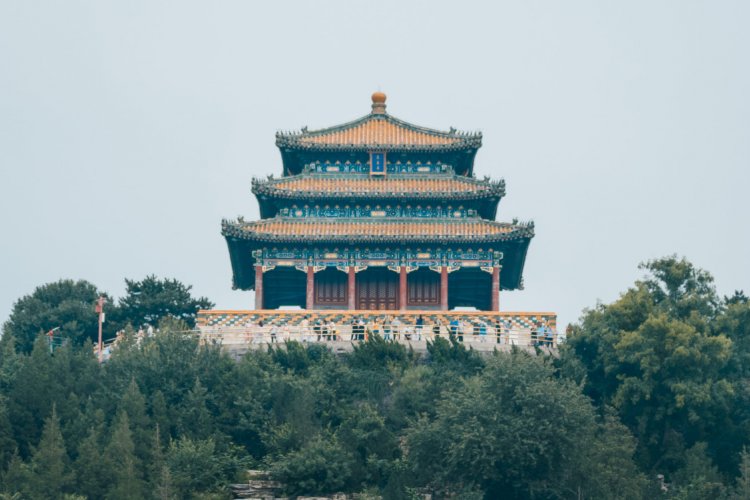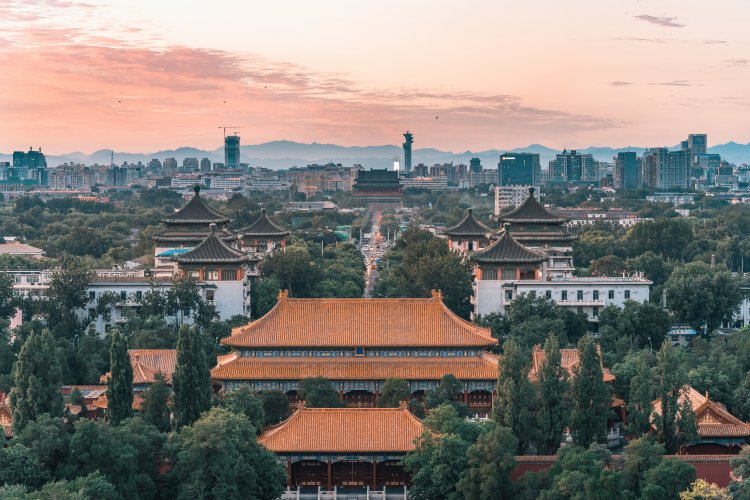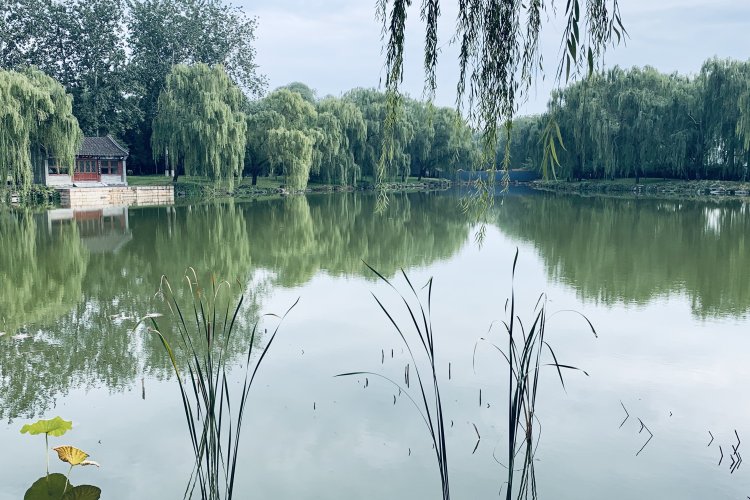Weekend Walk: Exploring Prince Gong's Mansion
The Inner City of Beijing was once dotted with large enclosed estates belonging to members of the imperial family, important retainers, and high officials. A few of these “Princely Mansions”, aka 王府 wangfu, still exist in one form or another, although most were destroyed or converted to other uses in the 20th century.
One of the few open to visitors is the lavishly restored former home and garden of Yixin (1833-1898), known as Prince Gong or “Prince Kung,” depending on when your Chinese history textbook was published. Yixin was the son of the Daoguang Emperor (1782-1850), but lost out on the Forbidden City sweepstakes to his brother, Yizhu (1831-1861). Yizhu was enthroned as the Xianfeng Emperor and got to live in the Forbidden City. Yixin was given an imperial peerage, an annual stipend of silver and grain, and a hand-me-down palace near the shores of Qianhai in central Beijing.
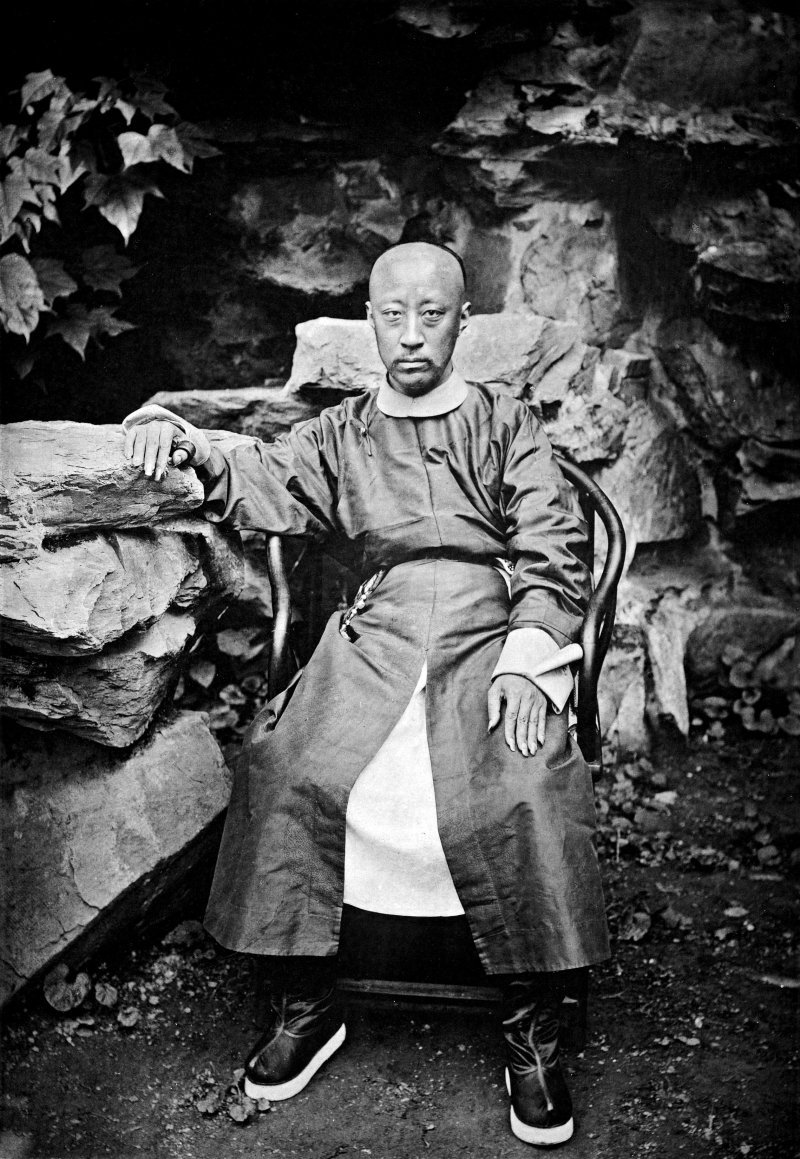
Prince Gong’s new digs were initially constructed in 1777 as the residence of Heshen (1750-1799), an official who had strong Sugar-Daddy Vibes going with the Qianlong Emperor (1711-1799). Whatever the nature of their relationship, Heshen was a notorious favorite of the elderly monarch. The Qianlong Emperor’s sons had other feelings (For those who have seen Seasons 3 and 4 of Succession, Heshen played Kerry to Logan Roy’s Qianlong Emperor). When the Qianlong Emperor finally died in 1799, his heir, the Jiaqing Emperor (1760-1820), wasted no time accusing Heshen of corruption, ordering his death, and confiscating Heshen’s vast wealth and property holdings, including his palace by Qianhai Lake.
A half-century later, Prince Gong set about making this slightly used, possibly cursed fixer-upper Princely Mansion into a palace he could call his own. The residential parts are nice enough, suitable for somebody like Prince Gong, who became an official, councilor, and diplomatic fixer during some of the dynasty’s most difficult decades. But it is Prince Gong’s garden that attracts throngs of tourists every day (except Mondays, when the site is closed).

Reservations to visit Prince Gong's Mansion can be made online via the Official Account. However, the online reservation system is in Chinese and only accepts WeChat or Alipay. Should you not want to bother with the reservation system, you can try to rock up to the ticket window just inside and to the right of the main gate and announce in a tremulous lost-Laowai voice, “I only have cash.” (Kowtow=optional).
Unless tickets are sold out for the day (usually only a problem during holiday weeks), you can buy an old-school paper ticket to enter the palace. If you purchased online tickets in advance using a passport rather than a Chinese National ID, you still need to go to the “Comprehensive Service Window” to get your online reservation converted into a paper ticket that can be scanned at the ticket check.
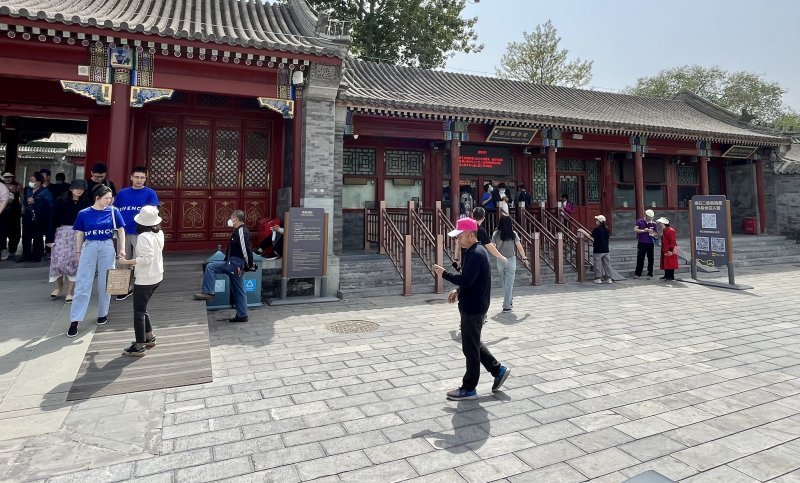
Once inside, take a moment to wander the residential sections. The first hall has a fascinating exhibition on the history of the Qing imperial clan with family photographs, genealogies, and a few artifacts (although unless you read Chinese, you may struggle with the who’s-who of it all). Some halls host temporary art exhibits; others have been restored with historic furniture and period details.
(Not all the architectural details and furniture are from the Qing Dynasty. After Prince Gong's death, the family sold part of the homestead to be used by a nearby university, and in the 20th century, a section of the mansion was converted into a factory and warehouse for home appliances.)
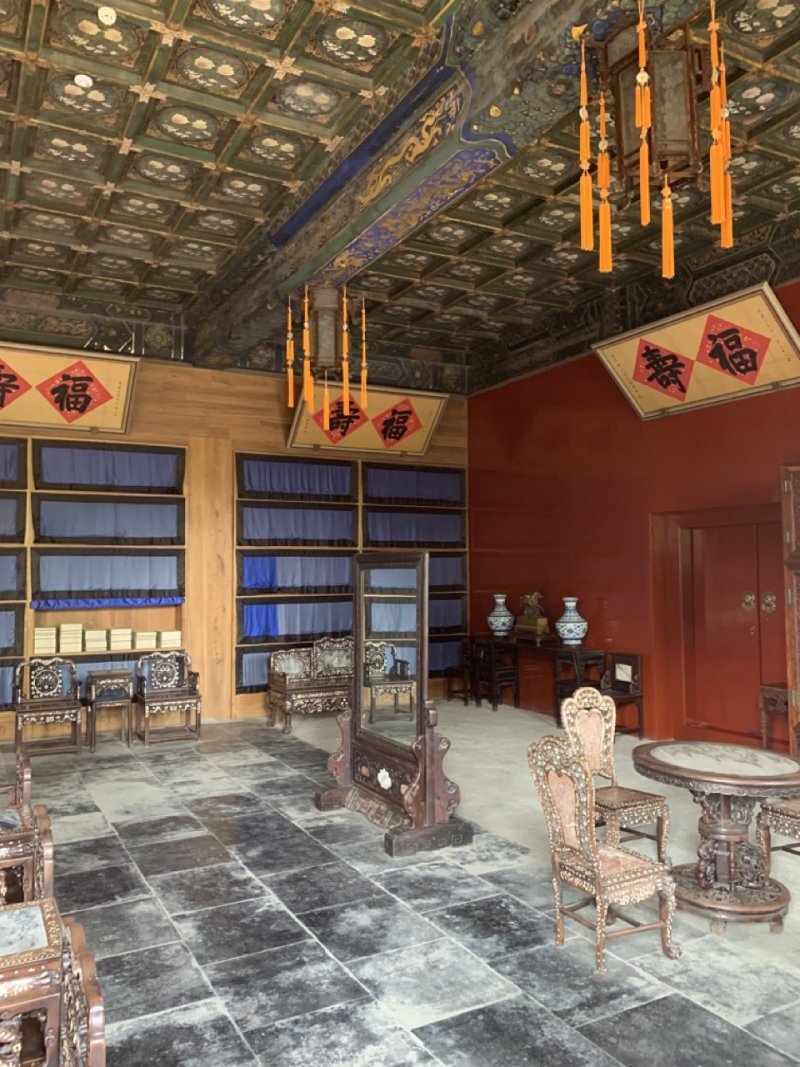
As you make your way to the garden in the back, one architectural quirk to look for is bats. Bats are a symbol of fortune in Chinese culture (there is a gloss about “changing your luck” that your Beijing colleague, the one who is always about 32.5 percent too eager to lecture you on local culture, can explain to you at length. Go ahead, ask them. They’ll love you for it). Bats were also one of many animal totems in Manchu spirituality. This double-whammy of symbolism means that there are bat motifs everywhere at Prince Gong’s mansion. Bat windows. Bats on the door signs. A bat pond. You’ll wonder if the palace belonged to a Manchu prince or Bruce Wayne.

There are two — equally remarkable — entrances to the garden. One is a faux-baroque gate inspired by the Western-style villas in the Old Summer Palace. The other is the Elm Pass, part of the 半里长城 banli changcheng, or “Half-Mile Great Wall,” a play on the familiar name for China’s most famous barrier, 万里长城 wanli changcheng or “10,000-mile Great Wall, and modeled after, you guessed it, the passes at the actual Wall.
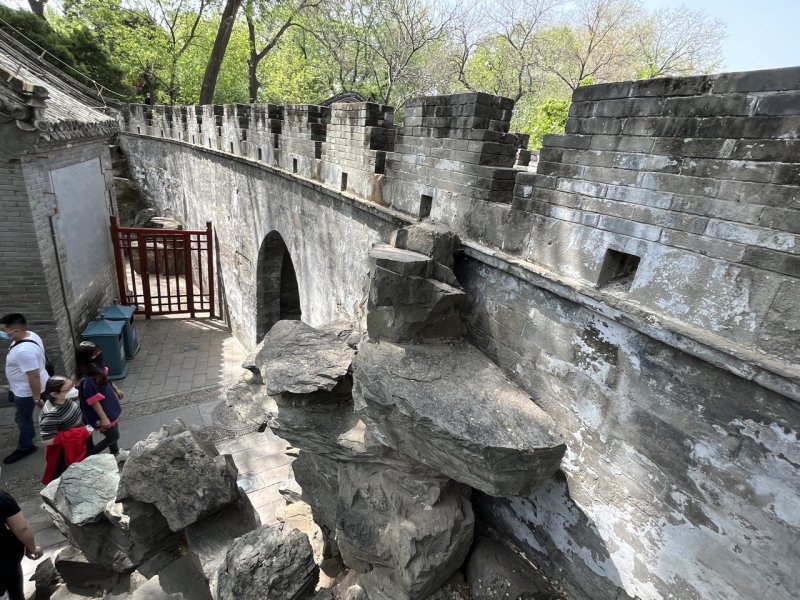
The mansion can get crowded, but don’t let that distract you. There are paths that lead up into the rockeries surrounding the garden, which are often (slightly) less traveled and offer a scenic vantage point to appreciate the space. If the line isn’t too long, check out the cave with a stone inscribed with the character “Fu” 福 for prosperity and luck, written in the calligraphy of Prince Gong’s great-great-great grandfather, the Kangxi Emperor, who reigned in the 17th century. Sadly, the cave does NOT contain a batmobile.
Prince Gong’s Mansion can get crowded at peak times. The best advice is to go on a weekday (if possible) and visit the mansion when it first opens at 8:30 am or wait until later in the afternoon. The ticket check closes around 4:00 pm. Situated near Houhai, Prince Gong’s mansion also makes a nice combination afternoon with lunch at one of the nearby restaurants. We recommend the Houhai branch of Peach by Hulu, about a 10- to 15-minute walk away on Yangfang Hutong.
About the author
Jeremiah Jenne earned his Ph.D. in Chinese history from the University of California, Davis, and taught Late Imperial and Modern China for over 15 years. He has lived in Beijing for nearly two decades and is the proprietor of Beijing by Foot, organizing history education programs and walking tours of the city.
READ: Story of the 'Jing: What's Behind the Name "Summer Palace"?
Images: Unsplash, Wikipedia, Jeremiah Jenne



